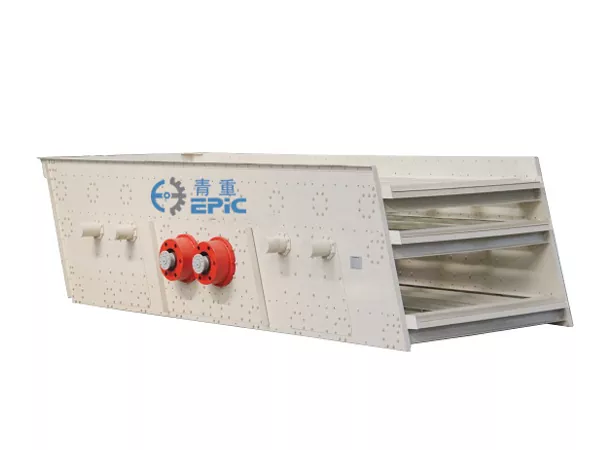 English
English Español
Español  Português
Português  русский
русский  Français
Français  日本語
日本語  Deutsch
Deutsch  tiếng Việt
tiếng Việt  Italiano
Italiano  Nederlands
Nederlands  ภาษาไทย
ภาษาไทย  Polski
Polski  한국어
한국어  Svenska
Svenska  magyar
magyar  Malay
Malay  বাংলা ভাষার
বাংলা ভাষার  Dansk
Dansk  Suomi
Suomi  हिन्दी
हिन्दी  Pilipino
Pilipino  Türkçe
Türkçe  Gaeilge
Gaeilge  العربية
العربية  Indonesia
Indonesia  Norsk
Norsk  تمل
تمل  český
český  ελληνικά
ελληνικά  український
український  Javanese
Javanese  فارسی
فارسی  தமிழ்
தமிழ்  తెలుగు
తెలుగు  नेपाली
नेपाली  Burmese
Burmese  български
български  ລາວ
ລາວ  Latine
Latine  Қазақша
Қазақша  Euskal
Euskal  Azərbaycan
Azərbaycan  Slovenský jazyk
Slovenský jazyk  Македонски
Македонски  Lietuvos
Lietuvos  Eesti Keel
Eesti Keel  Română
Română  Slovenski
Slovenski  मराठी
मराठी  Srpski језик
Srpski језик
What is the difference between a rotary vibrating screen and a linear vibrating screen?
2025-05-06
As a common screening equipment in industrial production, vibrating screens have significant differences in types and application scenarios. Although rotary vibrating screens and linear vibrating screens belong to the same category of vibrating screens, their working principles and structural characteristics are significantly different.
Rotary vibrating screens usually use vertical motors as excitation sources. The design of eccentric blocks makes the screen surface produce three-dimensional composite vibrations. The material presents a spiral diffusion motion trajectory on the screen. This multi-directional motion characteristic enables it to more efficiently handle materials with high viscosity or irregular shapes, such as fine screening in powder metallurgy or food industries.
Linear vibrating screens rely on two symmetrically arranged vibration motors to rotate synchronously in opposite directions to form a linear reciprocating vibration along the length of the screen body. The material jumps forward in a parabolic curve on the screen surface. This motion mode is particularly suitable for the rapid classification and processing of bulk materials such as coal and ore. Because of its simple structure and large processing capacity, it is particularly widely used in the mining field.
From the perspective of screening accuracy, the rotary vibrating screen has a better screening effect on fine particles due to its longer material residence time and complex motion trajectory; while the linear vibrating screen is better at efficient sorting of coarse particles due to its fast screening ability brought by high-frequency vibration. In addition, there are differences in the maintenance costs of vibrating screens. Rotary vibrating screens usually require more detailed maintenance due to their complex structure, while linear vibrating screens are highly favored in the heavy industry for their durability and low failure rate. The selection of the two types of vibrating screens needs to be combined with material characteristics, production requirements and process requirements to achieve the best screening effect.





